
Since its emergence in early twentieth century abstraction has become an aesthetic category more than an art movement. It has provided a series of models to diverse artists’ practices that remain paradigmatic and exemplary for the way in which we understand art production in modern and contemporary times. It has also radically changed the modes of distribution and reception as they were previously conceived in pre-modernist art.
For this exhibition we would like to foreground the paradigmatic models provided by abstraction that continue to pervade in art production today. These models constitute the curatorial structure of this exhibition proposal and each corresponds to a set of works from the Ella Fontanals-Cisneros Collection that is linked to an enduring narrative of abstract art. The groupings in which our exhibition will be divided are Abstract Impulses, Laboratory of Reason, Uncommon Senses and Spatial Conflicts. Below you will find a detailed description of these groupings before the corresponding set of works images. In addition to these four groupings we will include a fifth chapter in our catalogue that is devoted to the use of different media that we will revise under the title “Expanded Field.”
Abstract Impulses
In what is already a well-known history, abstraction was related in its first phase with the rupture with mimetic representation and with the subsequence substitution of the represented object by the structural elements of painting itself (color, line, planes, etc.) The chapter dedicated to this almost century-long crisis in representation, will be referred to as Abstract Impulses.
Laboratory of Reason
A second paradigmatic model for art production that came along with the insurgence of abstraction is the questioning of the nature and essence of art. Instead of asking “what is beauty?”- as was the case with classic or traditional art, artists expressing themselves according to an abstract approach criticized art’s very existence to the extreme of declaring it dead. The works in this chapter are gathered under the rubric Laboratory of Reason.
Uncommon Senses
Uncommon Senses is the heading for a third shift in art models. Here we will relate abstraction to modes of counter-visuality. With the introduction of many different materials and media as well as the integration and crossovers with other art forms such as theater, music, dance and literature, abstraction demanded an approach that required the use of multiple senses, both from its makers but also art’s viewers.
Spatial Conflicts
Abstraction implies a radical change in the conception of spatiality. Against the classical illusory space of renaissance perspective, abstract art introduced in its place the flatness of modernist aesthetics, as well as time and movement to promote a real experience with art. In this final chapter we highlight a group of abstract art practices that we refer to as Spatial Conflicts.
Expanded Field
With the advent of abstraction many artists started to experiment with non-traditional media like photography, film and collage. Since the second avant-gardes, those experiments have expanded to installation, video and digital art. Rosalind Krauss’ essay, “Sculpture in the Expanded Field” is a key reference in understanding the urgency for transgressing the limits of the media artists have used since the inception of modern and abstract art in particular.
Artists
Doug Aitken, Francis Alÿs, Miguel Amat, Regina Aprijaskis, Antonio Asis, Emilia Azcárate, Alberto Borea, Stanley Brouwn, James Brown, Carlos Bunga, Daniel Buren, Sérgio Camargo, Mario Carreño, Natalia Castañeda, Carla Chaim, Lygia Clark, Dadamaino, Sandu Darie, Willys de Castro, Iran do Espirito Santo, Leonardo Drew, Danilo Dueñas, Felipe Dulzaides, Olafur Eliasson, Eugenio Espinoza, Qin Feng, José Gabriel Fernández, Magdalena Fernández, Fernanda Fragateiro, Mario García Torres, Theaster Gates, Gego, Gunther Gerszo, Jaime Gili, Mathias Goeritz, Fernanda Gomes, Alberto Greco, Sarah Grilo, Andreas Gursky, Barbara Hepworth, Arturo Herrera, Alfred Jensen, Rashid Johnson, Donald Judd, William Kentridge, Jannis Kounellis, Liz Larner, Suwon Lee, Jac Leirner, Sol Lewitt, Renata Lucas, Guido Llinás, Anna Maria Maiolino, Sameer Makarius, Gilda Mantilla & Raimond Chávez, Raúl Martínez, Gustavo Pérez Monzón, Sarah Morris, Reinhard Mucha, Jorge Pedro Núñez, Hélio Oiticica, Gabriel Orozco, Jorge Ortiz, Alejandro Otero, Claudio Perna, Liliana Porter, Carlos Puche, Eduardo Ramírez Villamizar, Dorthea Rockburne, Carlos Rojas, Osvaldo Romberg, Ana Sacerdote, Francisco Salazar, Mira Schendel, Harald Schmitz-Schmelzer, Karl Hugo Schmolz, Günter Schroeder, Gabriel Sierra, Dolores (Loló) Soldevilla, Jesús Soto, Eduardo Terrazas, Erwin Thorn, Fred Tomaselli, Richard Tuttle, Adán Vallecillo, Adrián Villar Rojas, Alfred Wenemoser, Pae White.
CIFO Art Space
1018 North Miami Ave
Miami, Florida 33136
305 455 3333
[email protected]
www.cifo.org

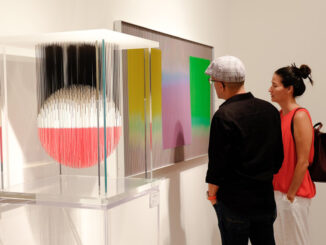
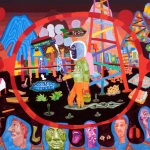
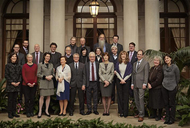
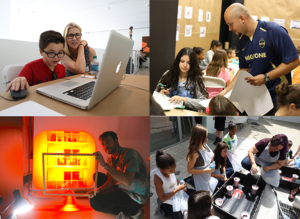
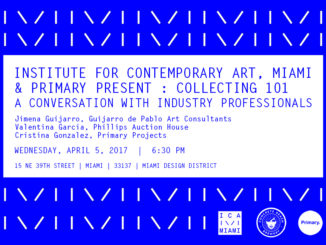
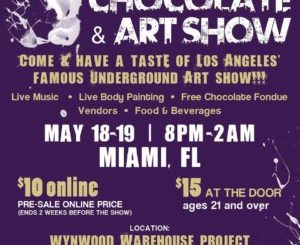
Be the first to comment